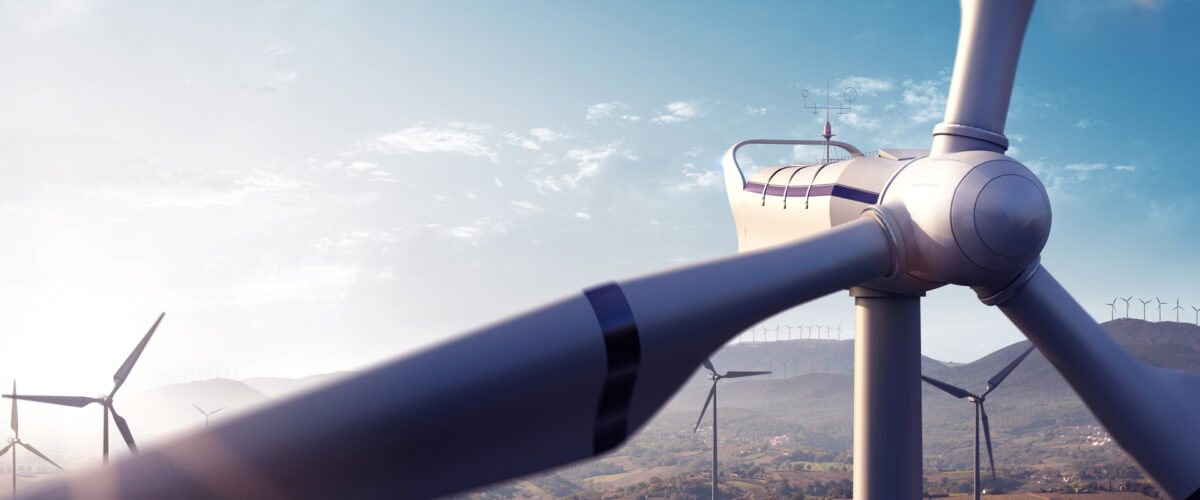Artikel | 19 mars 2020
Repowering Wind Farms in Sweden – securing technical and economical sustainability

Wind turbines don’t last for ever. In less than two decades, many of the wind farms established in Sweden have reached the end of their technical and economical lifespan and will need to be replaced. However, several of them are built on prime wind sites and the power capacity and resource efficiency on these sites can be significantly increased through repowering. In this article, Tove Andersson, Jonathan Andersson and Sunniva Rosqvist of Setterwalls share their view on the main repowering and permitting options.
What is Repowering?
As there is no general definition of the term repowering, it is not completely clear which measures and processes are covered by the term. But in short, repowering can be explained as the process of renewing an aging wind farm, with the aim of maintaining or increasing the power capacity or efficiency of the farm.
Repowering can be accomplished in a number of different ways. One way is to extend the lifespan of wind turbines by replacing selected components. Another possibility is to replace the full fleet of wind turbines with new, more powerful and efficient ones. As new wind turbines allow for more capacity per turbine, a smaller number of new turbines can generate more power than a larger number of old turbines. Other repowering options could include inter alia re-location of the wind turbines, adjustments of the project area as well as other upgrades of the wind farm’s infrastructure.
Permitting Options
New Environmental Permit
In order to continue the operation of a wind farm after the environmental permit has expired, the operator must obtain a new environmental permit as the Swedish Environmental Code does not allow for an extension of the permit’s validity period. A new environmental permit may also be required in other repowering situations, for example if additional wind turbines are considered.
The process of applying for and obtaining a new environmental permit is complex and time-consuming. It entails consultations, investigations and an environmental impact assessment. A new permit also requires municipal approval. Certain more limited repowering options can be permitted after an application for an amended permit, or an application for altered permit conditions, at the permitting authority. In some cases, where the changes do not require a permit per se or constitute a significant inconvenience to people’s health and the environment, it may be enough to notify the supervisory authority of the planned changes.
Amended Permit
For minor and well-defined changes, an amended permit might be suitable. The Land and Environment Court at Nacka District Court recently rejected an application for an amended permit regarding increased height of the turbines based on the changes being so significant that they would result in a whole new operation. According to the court this would require a new permit. The judgement has been appealed to the Land and Environment Court of Appeal. Until that case has been decided, it is uncertain to what extent height changes can be granted through amended permits.
The process for obtaining an amended permit is similar to the process for obtaining a new permit. One important difference is that only the proposed change is reviewed. With this limited scope, the processing time is often shorter. However, an environmental impact assessment as well as municipal approval is still required even when it comes to obtaining an amended permit.
Alteration of Permit Conditions
A permit may include permit conditions that limit the maximum tower height, the rotor diameter etc. A condition may be altered or removed if it is obvious that it is no longer needed, more stringent than necessary or if the alteration of the condition is called for due to circumstances which were not foreseen when the permit was granted. However, it should be noted that alterations of permit conditions are permitted restrictively.
In the past, the Land and Environmental Court of Appeal has stated that permission to change the height of existing wind turbines can be given through a decision to alter a permit condition. However, in light of the latest case law developments, it is uncertain to what extent this statement still applies.
Notifications
For repowering smaller sites, a building permit and notification in accordance with the Swedish Environmental Code might be sufficient. An environmental notification is required for changes of operations that require notification for their permissibility, if the changes are of significance in terms of disturbance. In each case, contacts with the supervisory authority is highly recommended to find out their opinion on if the proposed handling is suitable or requires a notification or other actions.
Other things to consider before Repowering
Besides various permitting options, there are a number of other things to take in to account before a repowering process can be initiated. This relates inter alia to requirements for a building notification to the local building committee in certain cases, the need to review or amend any land lease agreements, any restrictions in zoning plans to be observed as well as if any demolition work requires a demolition permit or a notification.
Some examples of Repowering
The largest repowering project in Sweden is still in progress at Näsudden on Gotland, where an old wind farm is being completely replaced by a new one. So far, almost 60 old wind turbines with an installed capacity of 150–600 kW have been dismantled and replaced by some 27 modern, larger wind turbines with a capacity of 2–3 MW. With the new turbines, the capacity on the site has increased from 50 GWh to 200 GWh/year. Thereby, despite reducing the number of wind turbines by half, the capacity has four-doubled. Initially, the widespread ownership of the old wind turbines presented a difficult challenge in the process, but the owners formed a company, which hired an external project manager to run the project and facilitate cooperation.
At Täppeshusen in Höganäs, three old wind turbines – two with an installed capacity of 500 kW and one with 660 kW – were dismantled and sold to a buyer in Ireland who reassembled them. They were replaced by two 2,0 MW turbines, which were estimated to generate 14,8 GWh/year, compared to the 2,6 GWh/year generated by the three old wind turbines. As the new wind turbines were erected at different positions compared to the old ones, new roads and grid connections had to be constructed.
At the offshore wind farm Bockstigen, the nacelles, blades and control systems of five 20-year-old wind turbines with an installed capacity of 550-kW were replaced with newer components sourced from five refurbished 660 kW turbines. Thereby, the 2,75 MW total installed capacity of the wind farm increased to 3,3 MW and the expected annual capacity doubled from 5.5 GWh to 11 GWh. Existing foundations, towers, grid connections and communication networks were kept in use.
Concluding Remarks
Those who wish to repower aging wind farms have various options to choose from. There are a number of important technical, legal and economic matters to consider before determining which repowering option to move forward with. For larger projects, it is often necessary to obtain a new or amended environmental permit. Smaller projects may only require a notification to the supervisory authority combined with a building permit. Contact with the supervisory authority should be initiated early in the process in order to determine whether or not the repowering process can be carried out as planned. It is also important to investigate whether there are any existing permits, agreements or municipal plans that impose restrictions which need to be taken in to account before the repowering process can begin. The repowering option holds great possibilities for securing not least technical and economical sustainability.
Setterwalls´ team
Setterwalls’ specialist team in energy & commodities holds a market leading position in the Nordics and is top ranked by the major ranking institutes. Through our in-depth knowledge and experience of the energy industry, we have the commercial credibility to help our clients to achieve their objectives and to navigate in the complex regulations that surround a repowering process, whether as part of a transaction or in the actual proceeding.
Kontakt:
Verksamhetsområde:
Energi och råvaror, Företagsöverlåtelser, Infrastruktur, Miljörätt


